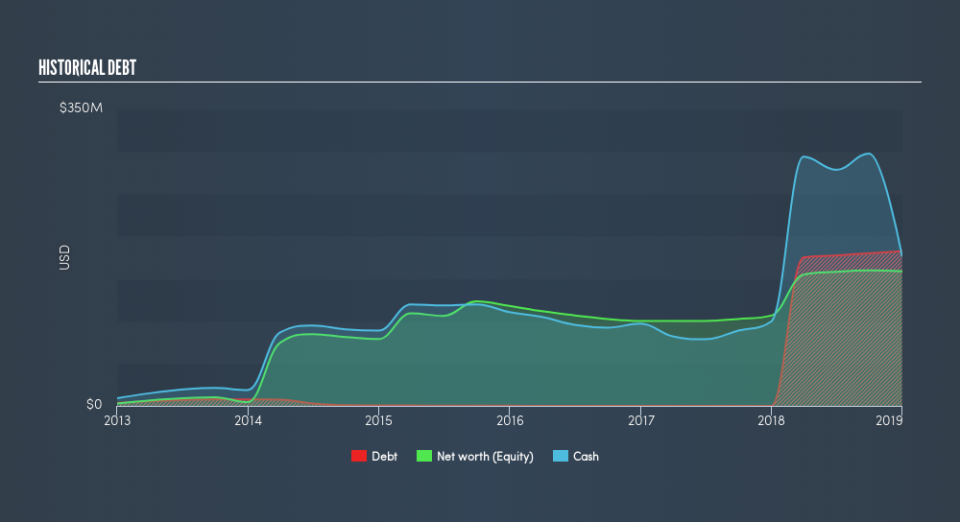You Might Like Q2 Holdings, Inc. (NYSE:QTWO) But Do You Like Its Debt?

Want to participate in a short research study? Help shape the future of investing tools and you could win a $250 gift card!
Q2 Holdings, Inc. (NYSE:QTWO) is a small-cap stock with a market capitalization of US$3.3b. While investors primarily focus on the growth potential and competitive landscape of the small-cap companies, they end up ignoring a key aspect, which could be the biggest threat to its existence: its financial health. Why is it important? Given that QTWO is not presently profitable, it’s crucial to understand the current state of its operations and pathway to profitability. We'll look at some basic checks that can form a snapshot the company’s financial strength. However, this is just a partial view of the stock, and I recommend you dig deeper yourself into QTWO here.
QTWO’s Debt (And Cash Flows)
QTWO has increased its debt level by about US$183m over the last 12 months – which includes long-term debt. With this growth in debt, the current cash and short-term investment levels stands at US$177m to keep the business going. On top of this, QTWO has generated US$4.6m in operating cash flow during the same period of time, leading to an operating cash to total debt ratio of 2.5%, indicating that QTWO’s operating cash is less than its debt.
Can QTWO pay its short-term liabilities?
At the current liabilities level of US$74m, the company has been able to meet these obligations given the level of current assets of US$218m, with a current ratio of 2.96x. The current ratio is the number you get when you divide current assets by current liabilities. For Software companies, this ratio is within a sensible range since there's a sufficient cash cushion without leaving too much capital idle or in low-earning investments.
Does QTWO face the risk of succumbing to its debt-load?
With total debt exceeding equity, QTWO is considered a highly levered company. This is somewhat unusual for small-caps companies, since lenders are often hesitant to provide attractive interest rates to less-established businesses. Though, since QTWO is currently loss-making, there’s a question of sustainability of its current operations. Running high debt, while not yet making money, can be risky in unexpected downturns as liquidity may dry up, making it hard to operate.
Next Steps:
QTWO’s high cash coverage means that, although its debt levels are high, the company is able to utilise its borrowings efficiently in order to generate cash flow. This may mean this is an optimal capital structure for the business, given that it is also meeting its short-term commitment. Keep in mind I haven't considered other factors such as how QTWO has been performing in the past. You should continue to research Q2 Holdings to get a better picture of the small-cap by looking at:
Future Outlook: What are well-informed industry analysts predicting for QTWO’s future growth? Take a look at our free research report of analyst consensus for QTWO’s outlook.
Valuation: What is QTWO worth today? Is the stock undervalued, even when its growth outlook is factored into its intrinsic value? The intrinsic value infographic in our free research report helps visualize whether QTWO is currently mispriced by the market.
Other High-Performing Stocks: Are there other stocks that provide better prospects with proven track records? Explore our free list of these great stocks here.
We aim to bring you long-term focused research analysis driven by fundamental data. Note that our analysis may not factor in the latest price-sensitive company announcements or qualitative material.
If you spot an error that warrants correction, please contact the editor at editorial-team@simplywallst.com. This article by Simply Wall St is general in nature. It does not constitute a recommendation to buy or sell any stock, and does not take account of your objectives, or your financial situation. Simply Wall St has no position in the stocks mentioned. Thank you for reading.

 Yahoo Finance
Yahoo Finance 
